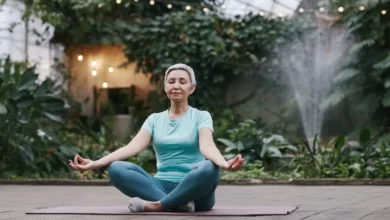Introduction
The demands of work, family and daily responsibilities can often leave us feeling overwhelmed and emotionally drained. Fortunately, there’s a creative and enjoyable way to combat stress: coloring. Beyond being a simple childhood pastime, coloring has emerged as a powerful form of art therapy that can significantly alleviate stress and promote overall well-being. In this article, we’ll delve into the world of coloring as a stress-relief technique and explore why art relieves stress in such a profound way.
1. Understanding Art Therapy and Stress Relief
Art therapy is a well-established psychological practice that utilizes the creative process of making art to improve mental and emotional well-being. This therapeutic technique taps into the innate human need for self-expression and creativity. Through art, individuals can externalize their thoughts, feelings, and emotions, which can lead to a greater sense of understanding and clarity.
One of the remarkable aspects of art therapy is its ability to alleviate stress. Numerous studies have shown that engaging in creative activities like coloring can have a direct impact on stress reduction. The act of coloring encourages mindfulness and promotes a meditative state of mind, allowing individuals to temporarily detach from their worries and immerse themselves in the present moment. As a result, stress levels decrease, and a sense of relaxation takes over.
2. How Art Relieves Stress: The Science Behind It

The human brain’s response to art is a fascinating subject of study. When we engage in creative activities like coloring, various neurological processes are triggered that contribute to stress relief. Research has shown that artistic activities stimulate the release of dopamine, a neurotransmitter associated with pleasure and reward. This surge in dopamine not only enhances mood but also counteracts the effects of stress-related chemicals in the brain.
Moreover, coloring activates the brain’s default mode network (DMN), which is responsible for introspection and self-reflection. This activation promotes a sense of calm and emotional processing, further reducing stress and anxiety. In fact, studies using functional magnetic resonance imaging (fMRI) have demonstrated increased activity in regions of the brain associated with attention and focus during coloring sessions. Understanding the science behind why art relieves stress can provide us with valuable insights into how to make the most of this powerful therapeutic tool.
Neurotransmitters and Pleasure Centers
At the heart of the art-stress relationship lies the role of neurotransmitters, the chemical messengers that transmit signals between nerve cells in the brain. One neurotransmitter in particular plays a significant role in the experience of pleasure and reward: dopamine.
When we engage in artistic activities like coloring, our brain releases dopamine. This release is associated with a sense of accomplishment, pleasure, and happiness. Dopamine activation not only enhances mood but also counteracts the negative impact of stress hormones like cortisol. This is why people often feel a sense of euphoria and satisfaction when they complete a beautiful coloring page or create a piece of art that resonates with them.
Default Mode Network Activation
The human brain is a complex network of interconnected regions, each responsible for different functions. The default mode network (DMN) is a set of brain regions that becomes active when the mind is at rest and not focused on the outside world. It’s responsible for introspection, self-reflection, and processing emotional experiences. This network is also a key player in the art-stress relationship.
Engaging in art, such as coloring, activates the DMN. This activation leads to a state of mental calmness and emotional processing. When we immerse ourselves in the process of coloring, we’re essentially giving our brains a break from the constant stream of worries and stressors. This “quiet” mode of brain activity allows us to reflect on our emotions, gain insights into our thoughts, and achieve a greater sense of inner peace.
Mindfulness and Meditation
Mindfulness is a state of focused awareness on the present moment, free from judgment and distraction. Coloring is a natural pathway to mindfulness. When you’re coloring, your attention is fully absorbed in the intricate details of the design. This focus redirects your thoughts away from stressors and concerns, essentially giving your mind a break from rumination.
Studies have shown that mindfulness-based activities, including coloring, trigger a relaxation response in the body. This response is characterized by reduced heart rate, lower blood pressure, and decreased levels of stress hormones. Engaging in mindfulness through coloring essentially calms your physiological responses to stress, leading to an overall feeling of relaxation.
Creating a Sense of Control
Stress often arises from a feeling of lack of control over situations in our lives. Engaging in art, including coloring, provides a sense of control that can counteract this feeling of helplessness. You have control over the colors you choose, the strokes you make, and the overall design. This sense of agency can be empowering, allowing you to channel your energy into a creative outlet that you have complete control over.
Expression Without Words
Art is a universal language that allows for self-expression without the need for words. For many people, communicating their feelings verbally can be challenging, and stress can stem from the frustration of not being able to convey their emotions adequately. Engaging in art, particularly coloring, offers an alternative means of expression. The colors you choose, the patterns you create, and the emotions you infuse into your artwork become a form of nonverbal communication with yourself.
3. The Therapeutic Elements of Coloring

The process of coloring itself embodies several therapeutic elements that contribute to stress relief.
Mindfulness and Concentration: Coloring requires focused attention on intricate patterns and designs. This concentration on the task at hand diverts the mind from stressors, fostering mindfulness and enabling individuals to experience a “flow” state.
Sense of Accomplishment: Completing a coloring page provides a sense of achievement, which boosts self-esteem and triggers positive emotions. This feeling of accomplishment is particularly important for individuals dealing with chronic stress.
Creativity and Expression: Engaging in creative activities encourages self-expression without the need for words. This can be particularly beneficial for those who struggle to communicate their emotions verbally.
Relaxation Response: Coloring triggers the body’s relaxation response, leading to decreased heart rate and lower blood pressure. This physical relaxation complements the mental calmness achieved through coloring.
4. Incorporating Coloring into Your Routine
Adding coloring to your daily routine doesn’t require any special skills or artistic talent. Here are some tips to get started:
Choose the Right Materials: Invest in quality coloring books and coloring supplies. The act of coloring itself should be enjoyable and stress-free.
Create a Relaxing Environment: Set up a comfortable space with good lighting and minimal distractions. This will help you fully immerse yourself in the coloring experience.
Make It a Habit: Dedicate a specific time each day for coloring. Whether it’s during your morning routine, on your lunch break, or before bed, consistency is key.
Explore Different Styles: Experiment with different coloring techniques, styles, and mediums. This variety will keep the experience fresh and exciting.
Embrace Imperfection: Remember that the goal is not to create a masterpiece but to enjoy the process. Let go of perfectionism and savor the moments of creativity.
Conclusion
The therapeutic benefits of coloring offer a ray of hope in a world where stress seems to be an unavoidable companion. Engaging in this creative and meditative practice can bring about a sense of calm, foster self-expression, and provide a respite from the pressures of daily life. As we’ve explored in this article, the science behind why art relieves stress is compelling, and the positive impact it can have on our mental and emotional well-being is undeniable. So, the next time you find yourself seeking solace from stress, consider picking up some coloring supplies and allowing the joy of coloring to guide you toward relaxation and inner peace.









